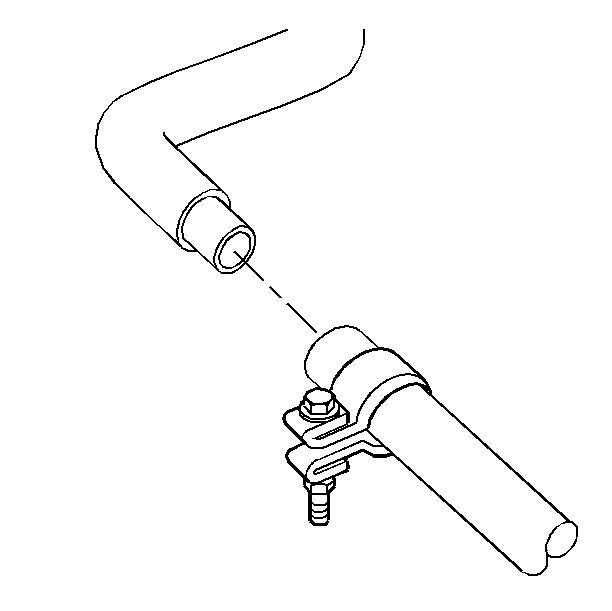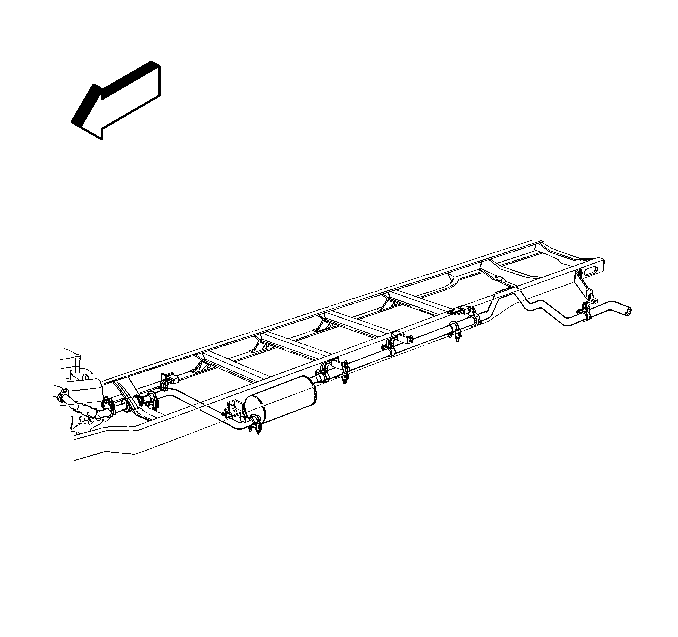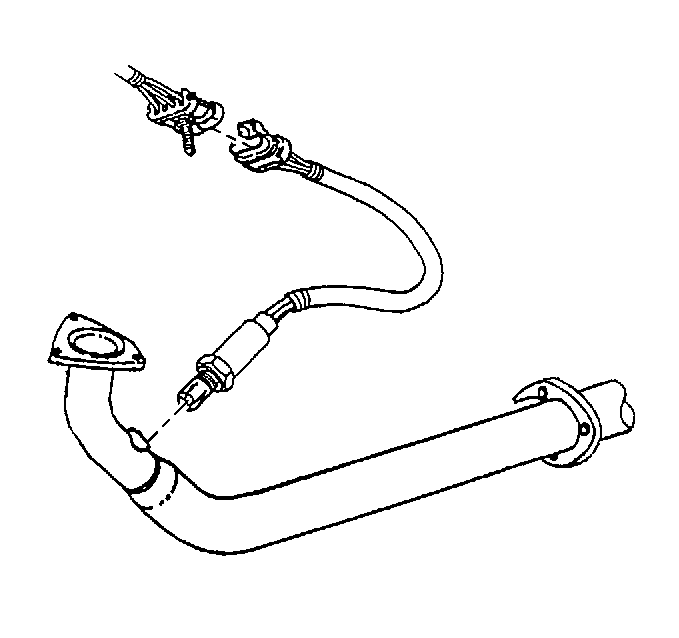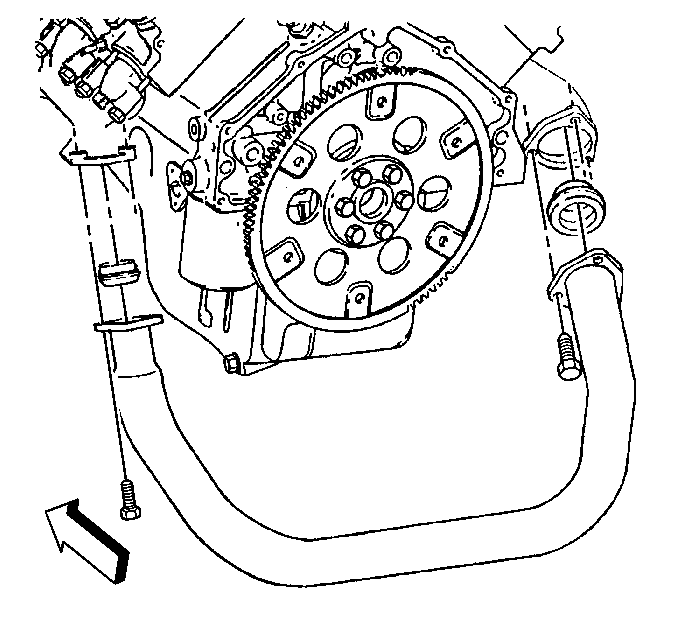Exhaust Pipe Replacement Intermediate
Removal Procedure
- Raise and suitably support the vehicle. Refer to Lifting and Jacking the Vehicle in General Information.
- Remove the exhaust tailpipe. Refer to Tail Pipe Replacement
- Loosen the clamps from the front and rear of the intermediate exhaust pipe.
- Remove the exhaust system from the hangers.
- Remove the exhaust pipe from the vehicle.

Installation Procedure
- Install the exhaust pipe on the vehicle.
- Install the clamps at the front and rear of the exhaust pipe.
- Install the exhaust tailpipe. Refer to Tail Pipe Replacement
- Lower the vehicle.

Notice: Use the correct fastener in the correct location. Replacement fasteners must be the correct part number for that application. Fasteners requiring replacement or fasteners requiring the use of thread locking compound or sealant are identified in the service procedure. Do not use paints, lubricants, or corrosion inhibitors on fasteners or fastener joint surfaces unless specified. These coatings affect fastener torque and joint clamping force and may damage the fastener. Use the correct tightening sequence and specifications when installing fasteners in order to avoid damage to parts and systems.

Tighten
Tighten the clamps to 68 N·m (50 lb ft).
Exhaust Pipe Replacement Front
Removal Procedure
- Raise and suitably support the vehicle. Refer to Lifting and Jacking the Vehicle in General Information.
- Remove the flange nuts that retain the exhaust pipe to the catalytic converter.
- Disconnect the oxygen sensor connectors.
- Remove the oxygen sensors from the front pipe. Refer to Heated Oxygen Sensor Replacement in Engine Controls.
- Remove the exhaust pipe nuts and the seals from the exhaust manifolds.
- Remove the exhaust pipe from the vehicle.

Installation Procedure
- Install the exhaust pipe and the new seals to the exhaust manifolds. Install the exhaust pipe flange and the new gasket to the catalytic converter.
- Install the exhaust pipe flange nuts.
- Install the nuts that retain the exhaust pipe to the manifold.
- Install the oxygen sensors. Refer to Heated Oxygen Sensor Replacement in Engine Controls.
- Connect the oxygen sensor connectors.
- Lower the vehicle.
Notice: Use the correct fastener in the correct location. Replacement fasteners must be the correct part number for that application. Fasteners requiring replacement or fasteners requiring the use of thread locking compound or sealant are identified in the service procedure. Do not use paints, lubricants, or corrosion inhibitors on fasteners or fastener joint surfaces unless specified. These coatings affect fastener torque and joint clamping force and may damage the fastener. Use the correct tightening sequence and specifications when installing fasteners in order to avoid damage to parts and systems.

Tighten
Tighten the nuts to 65 N·m (48 lb ft).
Tighten
Tighten the exhaust pipe flange nuts to 48 N·m(35 lb ft).
Exhaust Pipe Replacement Crossover
Removal Procedure
- Raise and suitably support the vehicle. Refer to Lifting and Jacking the Vehicle in General Information.
- Remove the exhaust pipe bolts and the seals from the exhaust manifolds.
- Remove the exhaust pipe from the vehicle.

Installation Procedure
- Install the exhaust pipe and the new seals to the exhaust manifolds.
- Install the bolts that retain the exhaust pipe to the manifold.
- Install the exhaust pipe flange nuts.
- Lower the vehicle.

Notice: Use the correct fastener in the correct location. Replacement fasteners must be the correct part number for that application. Fasteners requiring replacement or fasteners requiring the use of thread locking compound or sealant are identified in the service procedure. Do not use paints, lubricants, or corrosion inhibitors on fasteners or fastener joint surfaces unless specified. These coatings affect fastener torque and joint clamping force and may damage the fastener. Use the correct tightening sequence and specifications when installing fasteners in order to avoid damage to parts and systems.
Tighten
Tighten the exhaust pipe to manifold bolts to 34 N·m (25 lb ft).
